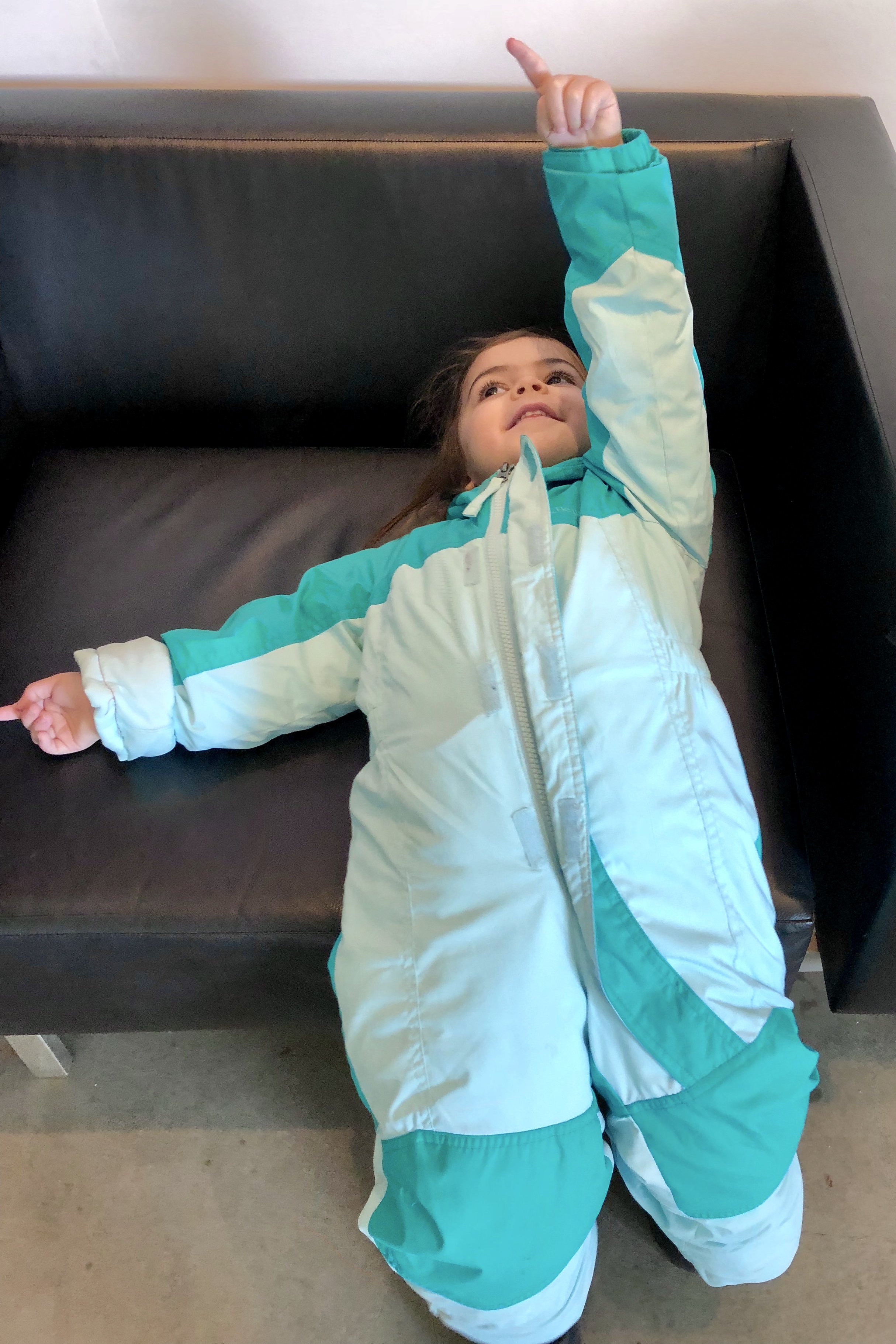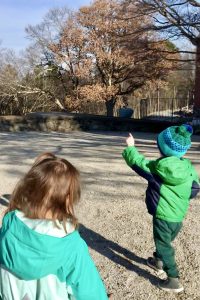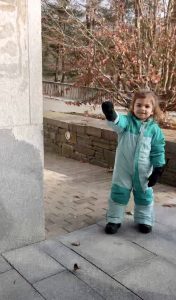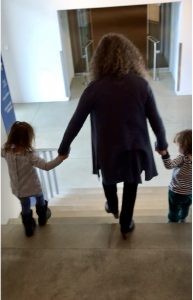After taking a small group up to the museum last Thursday, we wondered how we could use documentation from this visit to help us understand how children are feeling when going to the museum.
As we have mentioned in previous posts, this year's umbrella topic has the faculty at LNS, along with our Learning and Engagement team from the deCordova, wondering about art, nature and empathy. Much of this work so far has focused on teachers' roles in helping children develop empathy.
Now we are turning this question around, from "How can teachers help children develop empathy?" to:
How can the children help us (their teachers) develop empathy for them when visiting the museum?
Diane brings Jamie, Johann and Livia to the museum. On the way, they stop to meet Julie, who joins them for the morning's visit. Lydia, an intern, also joins them in the Lab and stays for the rest of the visit. Julie suggests a fun path to take, up through Alice's Garden, towards the rear entrance of the museum. Jamie and Julie venture up ahead, noticing several sculptures along the way. Diane, Johann and Livia soon follow behind. As they climb up the big steps, Johann expresses his delight in this new path, while Livia, once at the top, shares pride in accomplishing this physical feat.
At the top of the hill...
We meet up with Jamie and Julie at the top.
Johann: Run, run!
Jamie: Look, we’re way at the top!
Johann: Look, there, water!
Jamie: Where do you see?
Johann: There! Way down there!
Jamie: Is this the door? This door?
Jamie: It’s so windy up here!
Livia: It is windy up here.
Once inside...
 We stop in the seating area to take off our jackets and rest for a minute. The children adjust to this new space, curious about everything.
We stop in the seating area to take off our jackets and rest for a minute. The children adjust to this new space, curious about everything.
Jamie: Maybe we could go up the stairs.
Julie remarks how many sculptures we saw outside, on our way up to museum.
Jamie: Can we go up the stairs now?
Livia: They have books.
Johann: Look there…a rock wall.
Jamie: I think those are rocks. I think that’s so big rock.
Johann: Those are so big. That’s a flat rock.
Jamie: That’s a big rock
Johann: Fossils…turned into stones.
Livia: Those are rocks.
In the Lab...
Look! I want to go in there! Come in!
Johann: Do you want me to help you? Do you want me to help you Jamie?
I want you to tie this up.
Jamie: Can I do first? Livia: Yea, you can go first.
Who wants to be one of these?
Jamie: I want this to be construction!
Johann: I want to do one more sculpture.
Johann: All I have done in this room is been working on sculptures. Look at how many I made!
Jamie: We are so ...we are so high. We are so high!
How am I gonna get through?
How am I gonna get through?
These are attached to the wall. The whole thing is attached.
The whole thing is attached?
Johann: Yea. Because there’s a hook and all of it…the whole thing is attached. Come over here. Yea, you can see it from over here. What I can do…is hold onto this string and touch you.
Johann: Look, you see that hook? That hook…I wonder what those kids are doing…he hears Jamie and Livia now playing in the other room and decides to go and join them.
In the Linde Gallery...
In the Linde Gallery, where we view Sheila Pepe’s Hot Mess Formalism, the expected behavior is very different than it normally is at LNS. Julie teaches us that we need to use walking feet and we cannot touch anything in this area. She suggests that we hold hands to help us all remember not to touch.
Jamie: I’m excited!
Julie: Let’s sit down right there. We can just look at it.
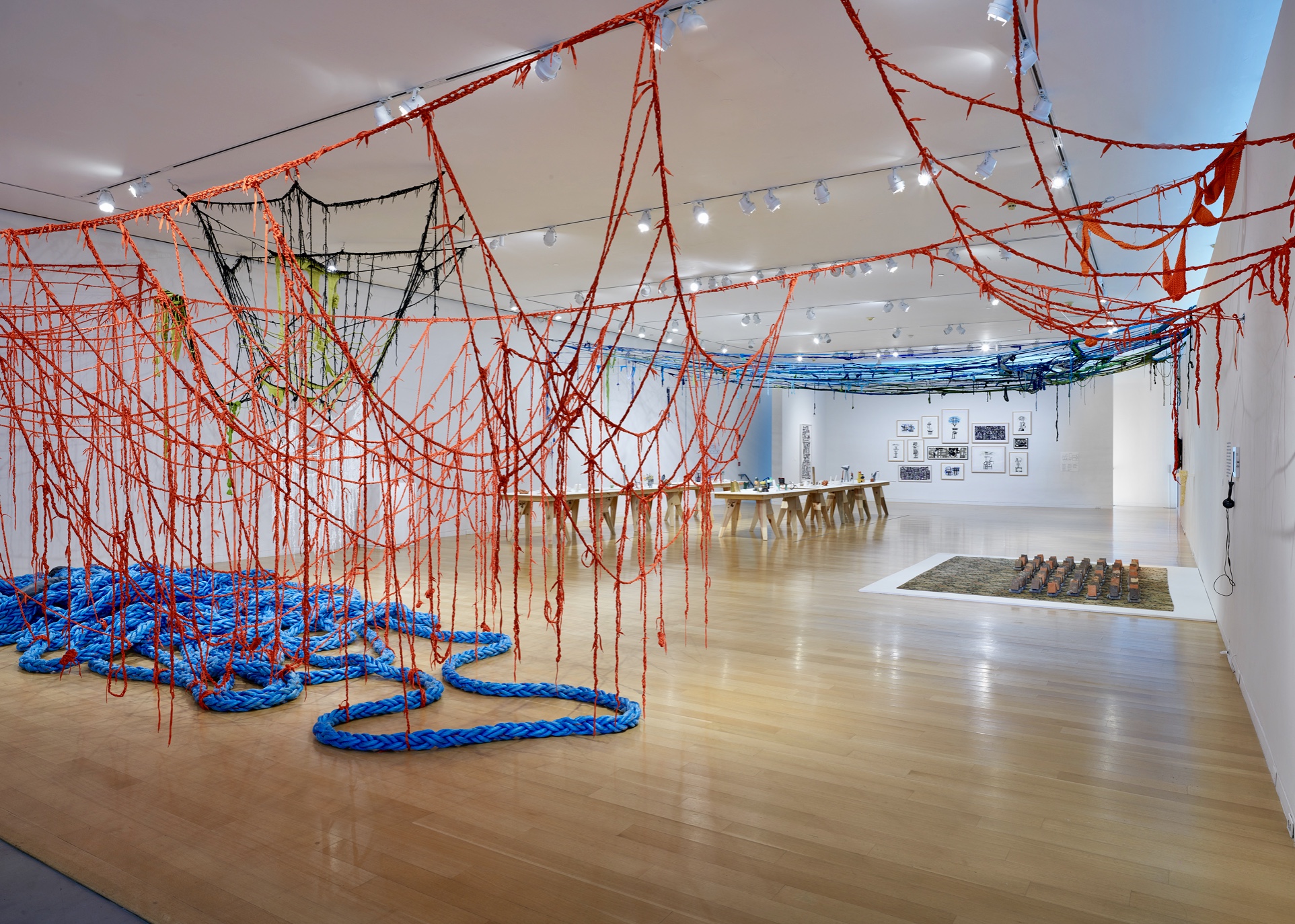
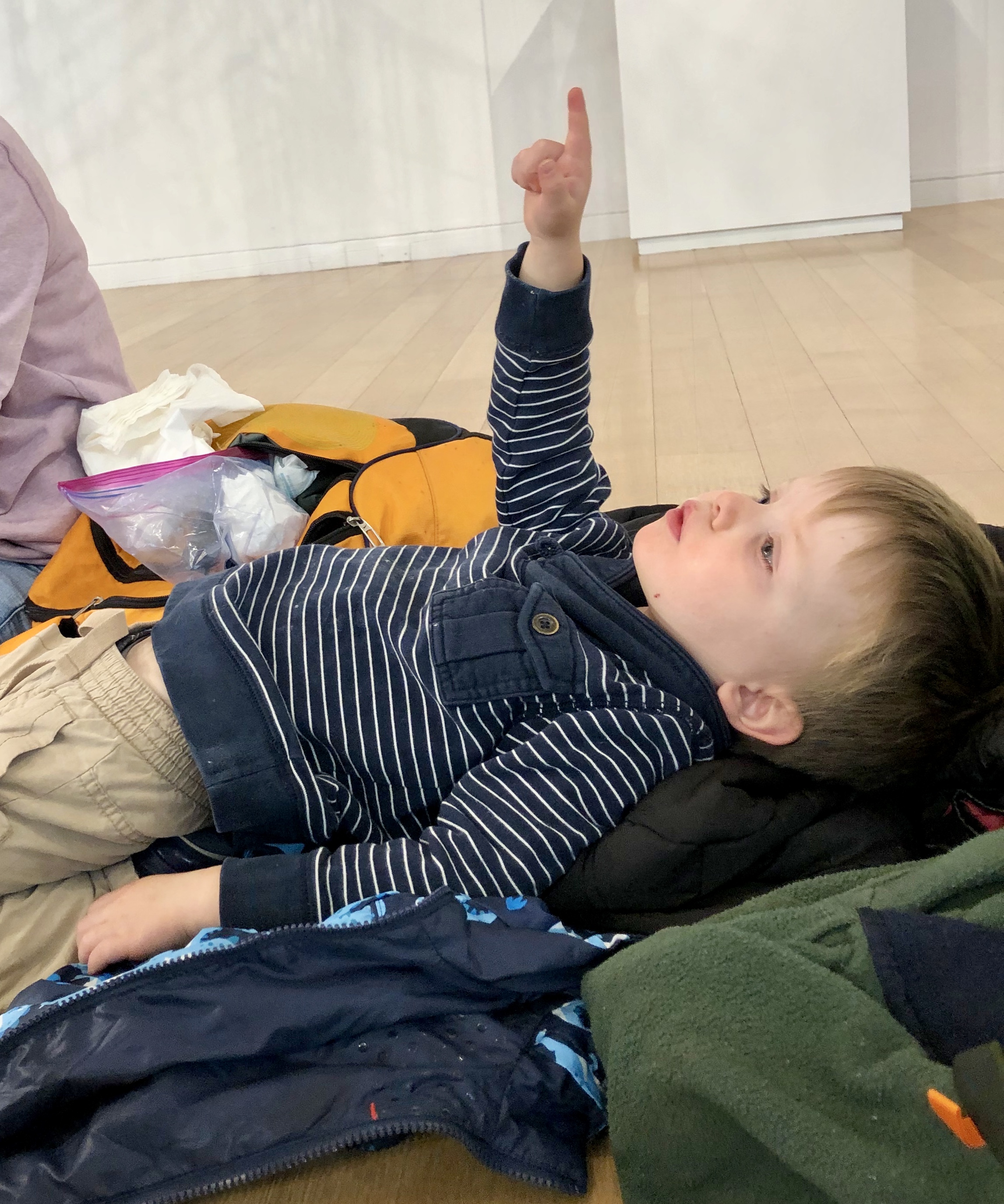
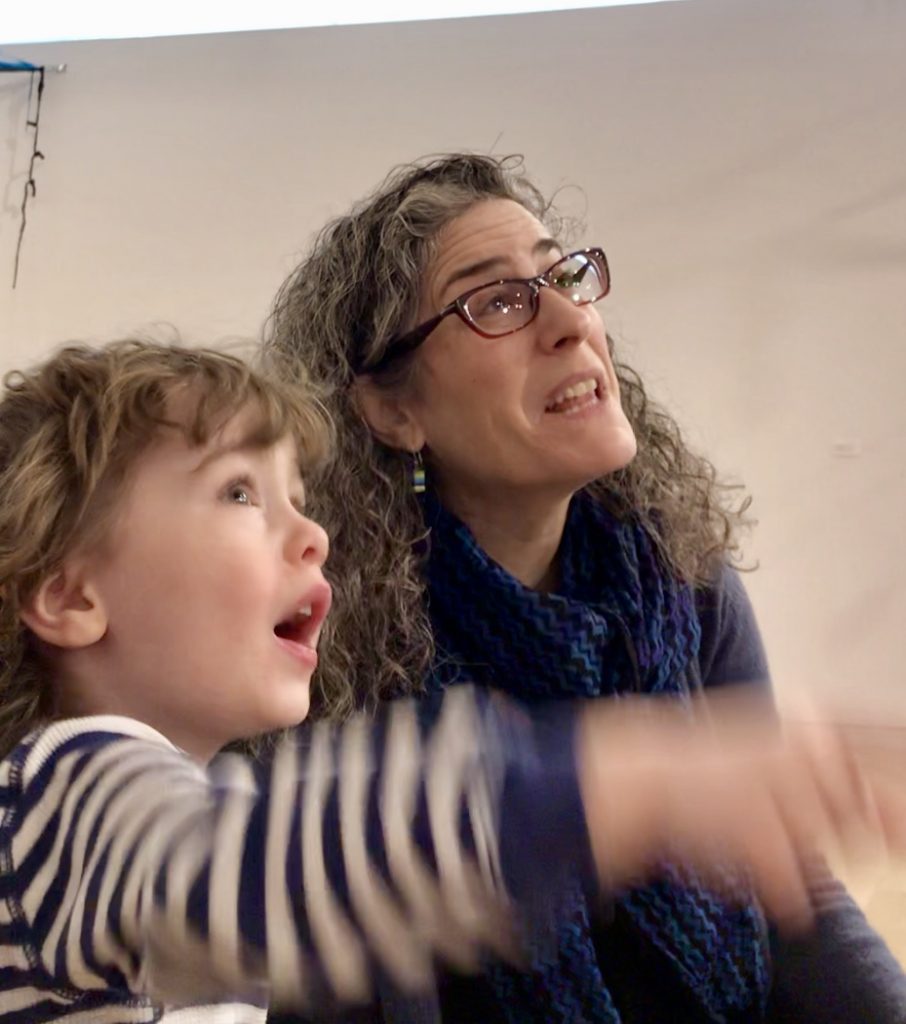
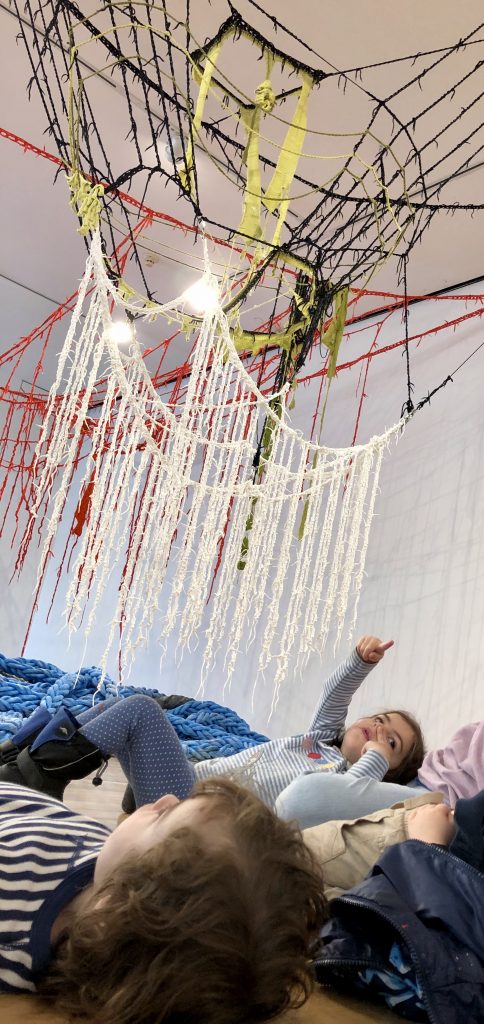
The children have many questions…
Can we touch the floor?
Can we touch our boots?
Why can’t we touch it?
Can we go back outside?
Look up there!
Can we go back to Studio Blue?
There’s something on the ceiling. (pointing)
Why can’t we touch it?
Can we go back to Studio Blue?
How did she make it? Those are two sculptures…
Now…we jump!
In the front lobby...
It is time to go. We take the elevator downstairs and stop by the front desk to put our jackets back on.
Livia leans back in a chair, looking up at the ceiling, pointing out the lights that she sees. (Much like we did up in the Linde)
We go through the door and Livia sings to herself, Outside, outside, we can go outside…Outside, outside…
As we leave the museum, the children notice one more sculpture, Reflection II and immediately ask if we can touch it.
Can I hold this guy?
Can I touch this guy?
Can we just touch it like this?
Can we touch it from far away?
What about, like this?
They each back away from the sculpture and hold their hands out as if they are touching it, though they are too far away to actually touch it.
